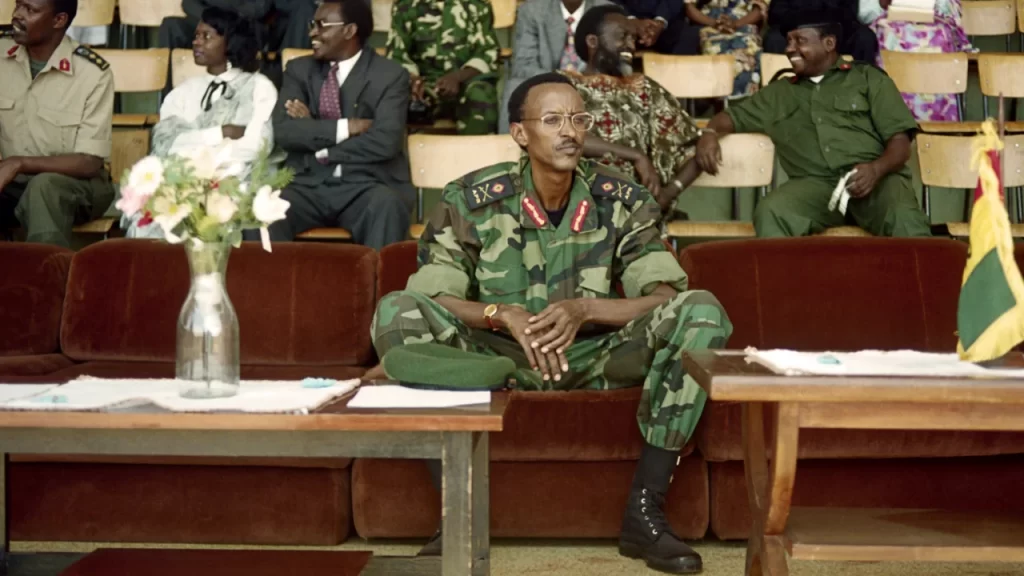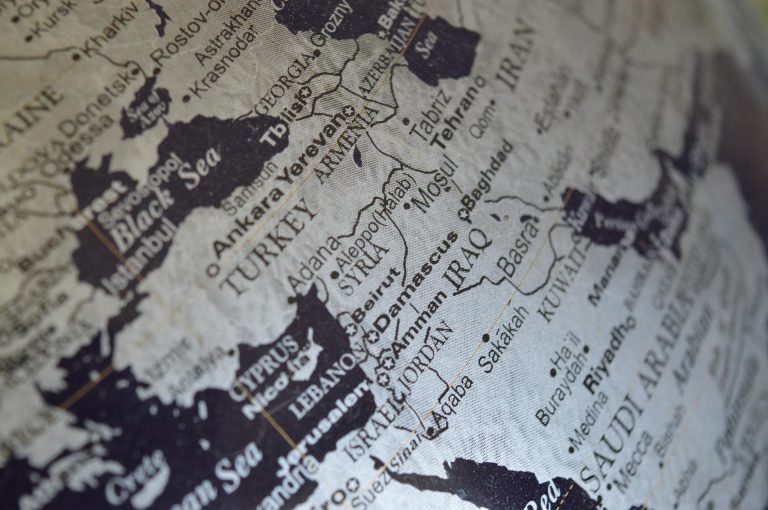Kenya is a creation of British colonialism, and it now exists as a post-colonial myth sustained by the force of arms and a grand narrative that serves as its national myth. People who believe in this national myth, or are forced to believe this myth called Kenya, automatically gain an identity called Kenyans. Is this myth an organic myth that can create an organic identity? or, is this Kenyan myth an imposed myth that leads to loathing and sedition?
Is Kenyan an Organic Identity or a Fictional Identity?
What does an animist Turkana nomad in Turkana county and a Hadhrami Arab alim (Islamic scholar) in Mombasa county share in common? They share very little in common which is why the Arab alim would not allow the Turkana man to marry his daughter, but would be happy to marry his daughter to a Hadhrami trader from Sanaa (in Yemen). However, both the Hadrami Arab and the Turkana nomad share a fictional identity known as Kenyan.
Some Arabs residing in Kenya describe this Kenyan identity as an imposed identity and some Turkana people adopt Kenyan as their new identity. This reveals that the identity called Kenyan is an ephemeral unstable concept that exists in the realm of imagination, and it appeals to some people while it is loathed by other people who share the same territorial borders set by European colonial cartographers. For some who reject the Kenyan identity, they may express this rejection is violent ways as it happened in June 2014 when armed Islamists invaded Mpeketoni town in Lamu county, and killed people they identified as “Kenyans”.

The fact that the Arab and Turkana described above consider each other as strangers reveals that the Kenyan identity is an imagined artificial identity. Because this identity serves as the basis for a nation-state known as Kenya, then Kenya can be described as an imagined identity or a fictional identity.
Most post-colonial African nation-states are imagined identities that were forced into reality by the violence of wars and suppression of liberties and freedom of those who refused to adopt the new national myths as their own myths. This happened in Nigeria when the Igbo people refused to adopt the myth of Nigeria, and the government led by the aptly named General Gowon (which is abbreviation for Go-on-With-one-Nigeria) perpetrated war crimes that killed up-to one million Igbo people who then surrended and accepted the Nigerian myth as one of their own. Nigeria is not the only case of violent imposition of the myth of the nation state on people who never wanted to engage with that myth, or even participate in it as characters in the stories of this myth. Belgian Congo and Sudan violently suppressed armed rebellions by people who rejected their national myths. Rarely has any post-colonial African state been created because its people were persuaded to take on a new identity.
What happens when the myth that defines a nation turns toxic? Has this happened anywhere recently? The answer to the second question is yes, and the affected nation is Ethiopia. Ethiopia was formed when the Semitic tribes of Amhara and Tigray conquered Cushitic and Nilotic tribes during the enterprise of empire creation. Most of the conquered people rejected the myth of the Ethiopian Empire (or Abyssinia as it was then called) and took up arms in an effort to craft their own political narratives. As expected, such rebellions were violently put down, but this did not expunge the yearning to kill the myth of Ethiopia – which can only happen if people who tell the myth (i.e government and privileged identities) are subjected to violence. Presently, tribes like Tigray and Oromo want to exit the imagined nation-state of Ethiopia despite the myth being modified to include a Federal nation-state based on ethnic identities. The Oromo and the Tigray have waged war against defenders of the Ethiopian myth – with Tigrayans suffering drone raids that depleted their ability to deploy military force and thus opted to sue for peace. On the other hand, the Oromo rebels continue to wage an armed rebellion across Oromia region. The Oromo rebels fight under the banner of the Oromo Liberation Army (OLA).


Kenyan as an Empowering and Oppressive Political Identity
In the field of study known as intersectionality, Kenyan is classified as a political identity. This identity that can exist with other forms of political identities such as tribe, race, and religion. These political identities co-occur with social identities such as caste, class (or socio-economic status [SES]), and sexual identity. There are also biological identities (bio-identities) set by physical appearance, age, gender, disability, weight, height, and health status (e.g people living with HIV/AIDS [PLWHA], diabetics, and lepers [who suffer from leprosy]).
Each and every person is an intersection of these identities – political identities, bio-identities, and social identities; and the combination of these identities form the intersectional identity of a person. For example, one person can be a young tall healthy and wealthy heterosexual white male while another person could be a poor short disabled geriatric black female. People can be grouped into specific set of intersectional identities.
Society and governments have created hierarchical systems that rank different intersectional identities, thus creating a power asymmetry that manifests as a binary set made up of an elite empowering identity and a marginalized oppressed identity. An empowering identity endows one with meritless opportunities to gain wealth, power, and social status within the existing power hierarchy, while a marginalized identity denies one opportunities even if they merit these opportunities. For example, in Kenya, Kalenjin is an empowering identity while Oromo is a marginalized identity. Despite Oromo people showing their loyalty to the Kenyan state, they have been overlooked during appointments to top governemnt positions, even if they merited those positions. A good case is the director of military intelligence who should have been an Oromo if merit was used for appointment, but instead a politically-linked Somali was awarded that position.
Identity Politics
The overlap between an intersectional identity and the existing power hierarchy forms the basis of identity politics. For the privileged people, maintaining the existing power hierarchy serves their interests. For the marginalized people, they may seek to reform or overthrow the existing power hierarchy but that can only occur when they have practical knowledge and political organizational skills.
The first genocide to occur in East Africa happened in Burundi when armed Tutsi heterosexual males sought to kill all educated Hutu so that the then existing power hierarchy was maintained for generations to come. This set that stage for the mass killings in Rwanda. Fear of popular uprising drives the effort by Tutsis to lobby support from privileged wealthy white males in the United States and Europe. For these Tutsi, the current tide of social justice sweeping across America and Europe is a threat to their existing privileged position, which may explain why Paul Kagame has strengthened economic ties with Arab monarchs who are opposed to any ideology that promotes social justice. Moreover, American allies of Kagame still support his dictatorial regime in Rwanda. Among the supporters of the dictatorship of Rwanda is the committed Republican politician, Howard Graham Buffett, and the Conservative British politician, Andrew Mitchell (who derogatorily described police officer as a plebs – a word used to designate people of low SES).



Power, Cultural Norms, and Liberation Revolutions
To ensure that the power hierarchy is maintained and normalized, cultural production is geared towards creating cultural values and religious systems that sustain this power hierarchy. As expected, anyone opposed to an oppressive power hierarchy must seek to reform or overthrow entirely the mainstreamed culture and religion, and this is what ancient revolutionaries did. Among these revolutionaries are Siddhartha Gautama who worked to eradicate the degrading caste system of Hinduism (and ended up establishing Buddhism), Jesus of Nazareth (the central figure in Christianity) who fought the theocratic despotism of the Temple priesthood, Mohamed bin Abdallah (founder of Islam) who survived assassinations as he struggled (or waged Jihad) to reform the infanticidal Arab culture and pagan religions that moralized exploitation of the weak by the strong, and Zarathustra who struggled to improve the living conditions of ordinary Avestans.
Gautama, Jesus, Mohammed, and Zarathustra are revolutionaries who established new ways of life that benefited most people and nipped the powers of leaders who may tried to exploit their authority to create despotic regimes whose goals were apotheosis of tyrants. The reason Adolf Hitler imposed a devastating war on Europe is because he sought apotheosis as the god of the Aryan super-people, and he considered communism and liberalism as the greatest impediments to this apotheosis.
In the 20th Century, communism – which is essentially secular messianism – managed to gain wide appeal among the non-aristocratic educated people who sought to reform their societies. Communism changed the world entirely in the 21st century after the Bolshevik revolution succeeded in the Russian Empire and replaced the monarchy with the governing councils called soviets. This led to the establishment of the Soviet Union. Communism remains the only ideology that violently ended empires and kingdoms, including the Ethiopian Empire (whose Emperor was smothered to death by revolutionaries on August 25, 1975, in the National Palace in Addis Ababa) and the Kingdom of Laos ( whose King Savang Vatthana and Queen Khamphoui, and their royal Crown Prince Vong Savang were worked to death in labor camps after the communist revolutionaries took power). Communism led to the death of empires across the world, and it can thus be described as the ideology that brought an end to the age of empires.
Postmodernism
The advent of post-structuralism – following the disastrous Soviet policies that led to millions of death – allowed the Stalinist French philosophers to seamlessly learn about, and adopt, the basic ideas that were foundational to postmodernism. It also allowed for mainstreaming the ideas of the Stalinist and Maoist philosophers in Europe, and blend them with neo-Nietzschean post-Heideggerian philosophies in the fields of semiotics (a specialized field of linguistics), literary criticism, art, epistemic archeology, and Freudian-Jungian psychoarcheology. Together, these ideas formed the basis of post-modernism.



